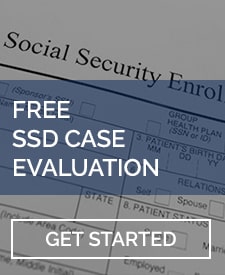Introduction
Embarking on the journey to secure social security disability benefits entails a meticulous understanding of the intricate process. In this all-encompassing guide, I delve into the multifaceted world of social security disability reviews after age 50. Leveraging my extensive expertise as a distinguished attorney with over two decades of experience in personal injury and social security cases, I am here to illuminate the complexities, ensuring you possess the knowledge needed to navigate the path with confidence.
Unraveling Complexity: A Holistic Exploration
The Odyssey of Patience: Embracing the Long Haul
Securing social security disability benefits is not a sprint, but rather a marathon that demands unwavering patience. The Social Security Administration (SSA) meticulously scrutinizes claims to ascertain their alignment with the statutory definition of disability. Given my seasoned background in the legal arena, I emphasize the paramount importance of recognizing the time investment this process necessitates. Perseverance and patience are key virtues as meticulous evaluations unfold to ensure that those genuinely deserving receive the vital assistance they require.

Debunking Myths: The Intricacies of Proving Disability
Dispelling misconceptions is paramount. Contrary to popular belief, contributing to insurance coverage through taxes does not automatically translate to entitlement to benefits. Establishing disability is a multifaceted endeavor, demanding adherence to the exacting standards set by the SSA. The fallacy that a mere belief in one’s inability to work due to disability will suffice must be eradicated. Instead, the SSA employs a rigorous assessment process to ensure benefits are granted only to those who genuinely meet the criteria.
Age as a Catalyst: Streamlining Eligibility
Ironically, age emerges as a pivotal factor in benefit acquisition. The SSA’s disability regulations become progressively accommodating once individuals cross the threshold of 50 years. This adjustment recognizes the inherent challenges associated with retraining individuals as they mature. To attain a comprehensive grasp of the SSA’s approach to social security disability review after age 50, it’s imperative to delve into the nuanced particulars.
The Golden 50s: What Changes in SSD Assessments?
Once you reach the age of 50, the SSA’s assessment paradigm undergoes a notable transformation.
- GRID rules introduction: These consider age, education, work experience, and Residual Functional Capacity.
- Retraining & Employment: Even if sedentary work is possible, the challenges of retraining and job placements grow.
The Shift at 55: A More Lenient Stance
The SSA’s evaluation criteria become even more understanding when one turns 55.
- Adaptability: A recognition of decreased flexibility to new roles and reduced adaptability to new skills or job training.
- Job Suitability: If restricted to light work and past jobs are infeasible, other available jobs may still qualify you for benefits.
The Senior Spectrum: Evaluating Disabilities after 60
The later stages of one’s career and health see a decrease in the frequency of CDRs. However, vigilance in documentation remains paramount.
- Frequency: Rare CDRs, given that medical improvement likelihood drops.
- Documentation: Ensure consistent and up-to-date medical records.
A Word of Caution: Early Retirement at 62 vs. Disability
Choosing early retirement over disability benefits at age 62 might seem tempting, but it comes with financial implications.
- Early Retirement: Opting in will permanently reduce your monthly benefits.
- Disability Continuation: Retain disability till full retirement age, resulting in a seamless transition to retirement benefits but at a more favorable monthly rate.
Deciphering the Five-Step Methodology

Step 1: Appraising Substantial Gainful Activity (SGA)
The expedition toward determining disability eligibility commences with an examination of substantial gainful activity (SGA). To qualify, one must demonstrate an inability to engage in SGA. SGA, a monthly income threshold established by the SSA, undergoes annual adjustments. In the year 2018, this threshold stood at $1,180. It’s pivotal to note that this figure represents gross income before taxes. If monthly earnings fall below $1,180 or if one is not employed, step two of the evaluation process is triggered.
Step 2: Evaluating Severity of Physical and/or Mental Conditions
The second step entails an exhaustive assessment of the severity of physical and/or mental conditions. Mere nominal impact on work capacity will not suffice; a profound impact is the imperative benchmark. The challenge here lies in establishing how a medical condition substantially impairs work capacity. Crafting a compelling connection between the medical condition and its pronounced impact on work capacity is indispensable at this stage.
Step 3: Meeting or Aligning with SSA Listings
Step three revolves around aligning with or satisfying the SSA’s meticulously crafted listings of medical conditions. These listings encompass conditions so severe that they inherently function as barriers to employment. Fulfilling these listings necessitates providing potent medical evidence. The exhaustive compilation of SSA listings is accessible at SSA Listings. If one’s condition does not align with these listings, the focus shifts to scrutinizing residual functional capacity (RFC).
Step 4: Scrutinizing Residual Functional Capacity (RFC)
Residual functional capacity (RFC) encapsulates an individual’s maximum physical and mental capabilities despite the presence of a medical condition. The process involves a meticulous perusal of medical records encompassing conditions, treatment, symptoms, and limitations. The objective is to ascertain the functional capacity, both physical and mental, that an individual can realistically exhibit. This information serves as the cornerstone for assessing when limitations render an individual incapable of engaging in their past relevant work, thereby concluding step four.
Step 5: Navigating the Labyrinth of GRID Rules
Step five demands substantiating that a medical condition hampers engagement in work within the national economy. However, individuals aged 50 and above are subject to the medical-vocational guidelines (GRID rules). This intricate framework is replete with exceptions. Broadly speaking, individuals aged 50 to 54 possessing a sedentary RFC that renders past work impossible could potentially qualify for disability benefits. This intriguing dynamic implies that even in the presence of jobs available at the sit-down level, eligibility for benefits may still apply. This unique perspective stems from the SSA’s acknowledgment that retraining for such positions becomes increasingly formidable after crossing the age of 50. Notably, if an individual’s past work entailed sedentary tasks and they can still perform them, the GRID rules may not grant disability benefits. (For those finding this perplexing, seeking guidance from an experienced social security disability attorney is highly recommended.)
The Brightening Horizon with Advancing Age
As one ages, the regulatory framework becomes increasingly accommodating. For individuals aged 55 to 59, a limited RFC—encompassing capacities like lifting, standing, and walking—can potentially trigger disability benefits, contingent on the impracticality of returning to past work. This acknowledgment underscores the unique challenges older individuals face in reentering the workforce or adapting to new roles. It also reflects the SSA’s sensitivity to the evolving needs of the aging population.
Conclusion
In the realm of social security disability review after age 50, knowledge emerges as the beacon of empowerment. This meticulously crafted guide delves into the stages, considerations, and advantages that shape your pursuit of benefits. As you navigate this intricate journey, remember that the counsel of seasoned attorneys can substantially bolster your prospects. At LaBovick Law Group, we offer extensive expertise and unwavering commitment to your success. If age intersects with your work capacity, reach out to us at (561) 623-3681 for a consultation. The time has come to secure the benefits rightfully yours.
Frequently Asked Questions
How pivotal is age in social security disability reviews?
Age assumes a pivotal role, significantly easing eligibility criteria, especially for those aged 50, 55, and beyond. This recognition stems from the understanding that career transitions become progressively intricate with advancing age.
Can I work while being eligible for disability benefits?
Eligibility can coexist with part-time work, provided earnings remain below the substantial gainful activity (SGA) threshold. This flexibility allows individuals to supplement their income without jeopardizing their benefit eligibility.
What encompasses residual functional capacity (RFC)?
RFC encapsulates the pinnacle of an individual’s physical and mental capabilities despite a medical condition. This assessment plays a pivotal role in determining the individual’s ability to engage in substantial gainful activity (SGA).
How does an experienced attorney enhance the process?
A skilled social security disability attorney offers invaluable guidance, unraveling the intricate regulations and optimizing your prospects of success. Their expertise ensures you present a compelling case highlighting the significant impact of your medical condition on work capacity.
When does social security disability cease reviewing cases?
Social security disability reviews extend well into later years, with criteria evolving based on age and circumstances. Consult a seasoned attorney to comprehend when these reviews undergo changes and how they may impact your benefit status.
